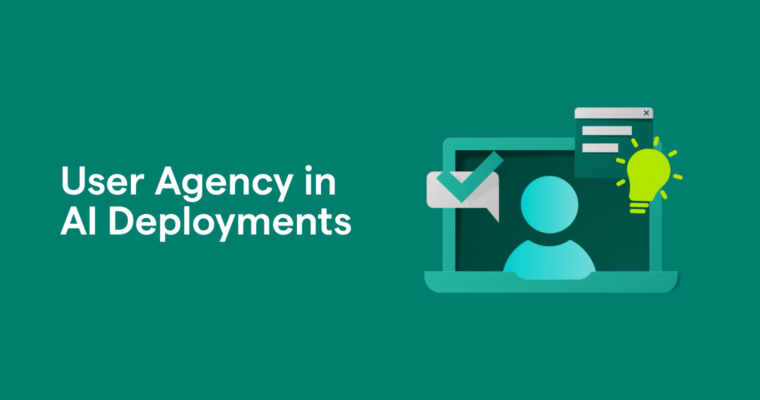
Artificial intelligence is rapidly transforming our society by improving efficiency in our daily tasks and advancing new frontiers in technology. However, AI’s quick adoption raises essential discussions about its impacts and safety.
To approach AI responsibly, consider some parallels between AI and the automobile.
What makes cars safe? It’s not just seatbelts, traffic laws, or crash tests—though they all contribute to their overall safety. A constellation of manufacturing processes, features, testing, governance, education, and societal norms allows billions of people to safely use cars daily.
Cars and AI are similar. At Grammarly, we think about responsible AI as a series of checks and balances throughout the AI pipeline, from conception to development to deployment. There is no single factor or control that makes AI responsible, but standards and practices adopted across an organization can establish a comprehensive approach to responsible AI.
What is responsible AI?
Responsible AI is creating and utilizing artificial intelligence in a manner that is mindful, morally sound, and aligned with human values. It’s about reining in AI in a way that prioritizes the intended impact while decreasing unwanted behavior or outcomes. This requires being fully aware of the capabilities of the AI technology at our disposal, identifying the potential pitfalls, selecting the right use cases, and instituting protections against risks.
Responsible AI takes different forms at different stages within the AI pipeline. Deploying AI responsibly may call for different principles than those needed to implement an existing AI model or to build AI-based technology from the ground up. Setting clear expectations and establishing guideposts for your AI to operate within at every stage of the AI pipeline is essential.
With that in mind, how can companies ensure they are on the right track when implementing responsible AI?
Crafting responsible AI frameworks
The journey toward responsible AI involves understanding the technology, considering its intended impact, and mitigating potential risks, such as unintended behaviors, hallucinations, or generating hazardous content. These steps ensure that AI behavior aligns with your company’s values.
Companies considering embedding AI into their businesses should consider how AI might affect their brand, users, or decision outcomes. Establishing a framework for responsible AI at your organization can help guide decisions around building or adopting AI.
The AI Risk Management Framework, published by the National Institute of Standards and Technology, is a valuable resource in this endeavor. This framework helps organizations recognize and manage the risks associated with generative AI and guides companies as they develop their principles for responsible AI.
Grammarly’s responsible AI standards
At Grammarly, we create and consume AI-based solutions every day. Responsible AI is a cornerstone of our product development and operational excellence. We have a dedicated Responsible AI team comprised of researchers, analytical linguists, machine learning engineers, and security experts who think critically about what we are trying to achieve for our company, our users, and our product.
As our company has evolved, we’ve developed our own responsible AI standards:
- Transparency: Users should be able to tell when they are interacting with AI. This includes identifying AI-generated content and providing details about AI training methods. This will help users understand how AI makes decisions. Knowing AI’s limitations and abilities enables users to make more informed decisions about its application.
- Fairness: AI fairness isn’t merely a buzzword at Grammarly; it’s a guiding principle. Through tools that evaluate AI outputs and rigorous sensitivity risk assessments, Grammarly proactively mitigates biases and offensive content. This commitment to guaranteeing respect, inclusivity, and fairness drives every user interaction.
- User Agency: True control rests in the hands of the user. Grammarly empowers its users with the ability to shape their interactions with AI. Users have the final say—whether they choose to accept writing suggestions or decide whether or not their content trains models. This ensures that AI amplifies, rather than overrides, their voice.
- Accountability: Recognizing the potential for misuse, Grammarly directly confronts the challenges of AI. Grammarly ensures accountability for its AI outputs through comprehensive testing for biases and by employing our Responsible AI team throughout the development process. Responsible AI is part of the company’s fabric, ensuring that AI is a tool for empowerment, not a source of error or harm.
- Privacy and Security: Grammarly’s approach to responsible AI is strongly committed to user privacy and security. We do not sell user data or allow third parties to access user data for advertising or training. Strict adherence to legal, regulatory, and internal standards supports this promise, ensuring that all AI development and training maintain the highest privacy and security measures.
Toward a more responsible future
Fostering a responsible environment for AI technology requires a collaborative effort from external stakeholders—from the technology industry to regulators to nation-states. To use AI responsibly, we must acknowledge and address inherent biases, strive for transparency in AI’s decision-making processes, and ensure that users have the necessary knowledge to make informed decisions about its use.
Embracing these principles is crucial for unlocking the full potential of AI while also mitigating its potential risks. This collective effort will pave the way for a future where AI technology is innovative, fair, and reliable.






